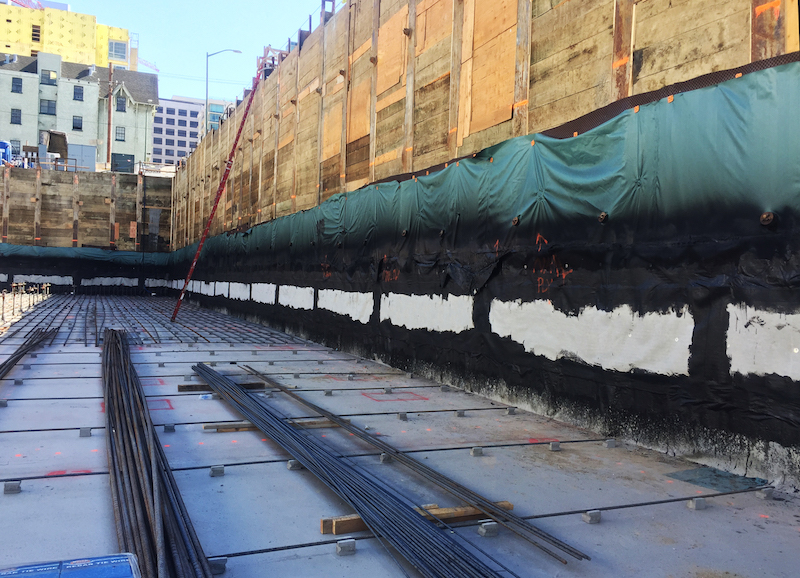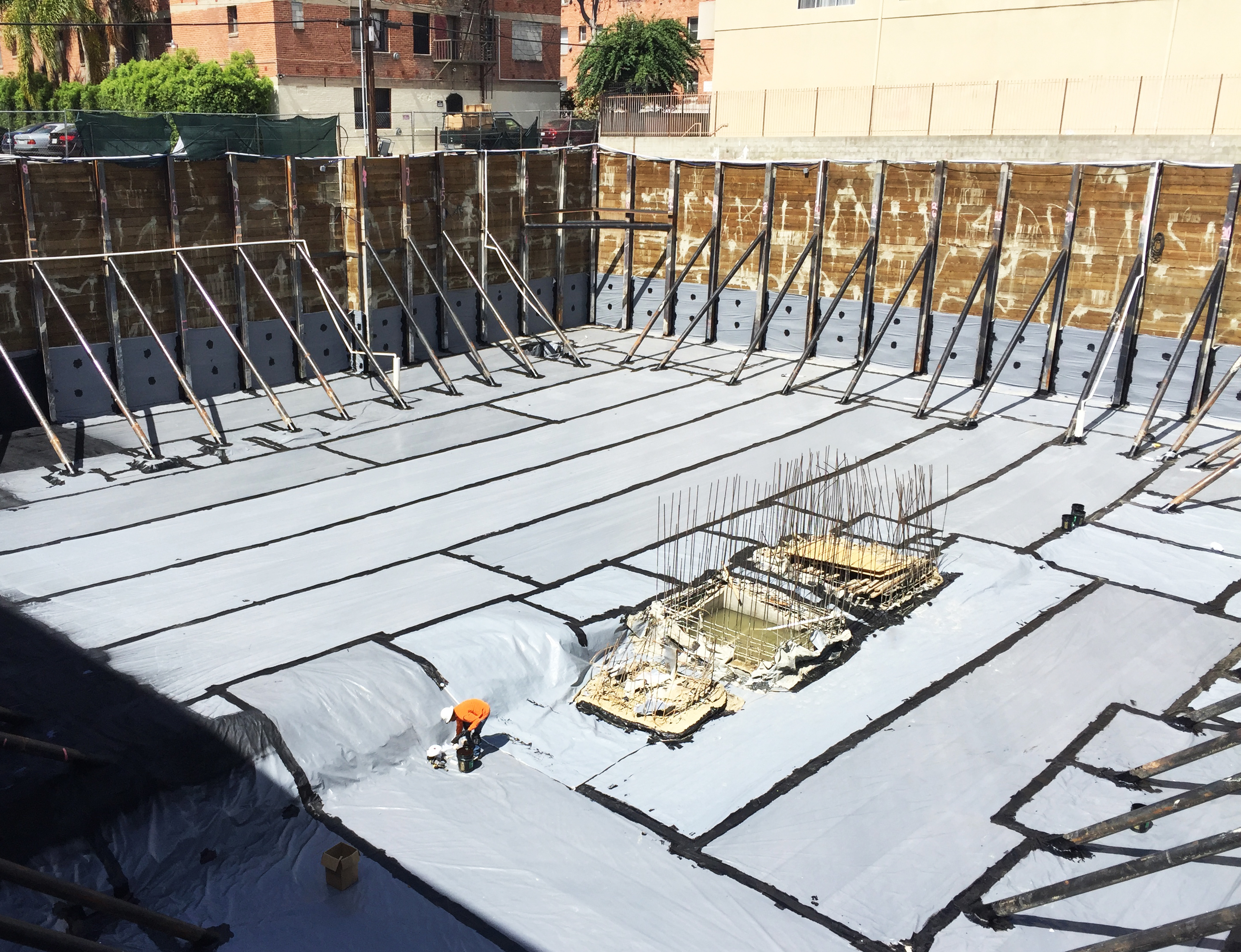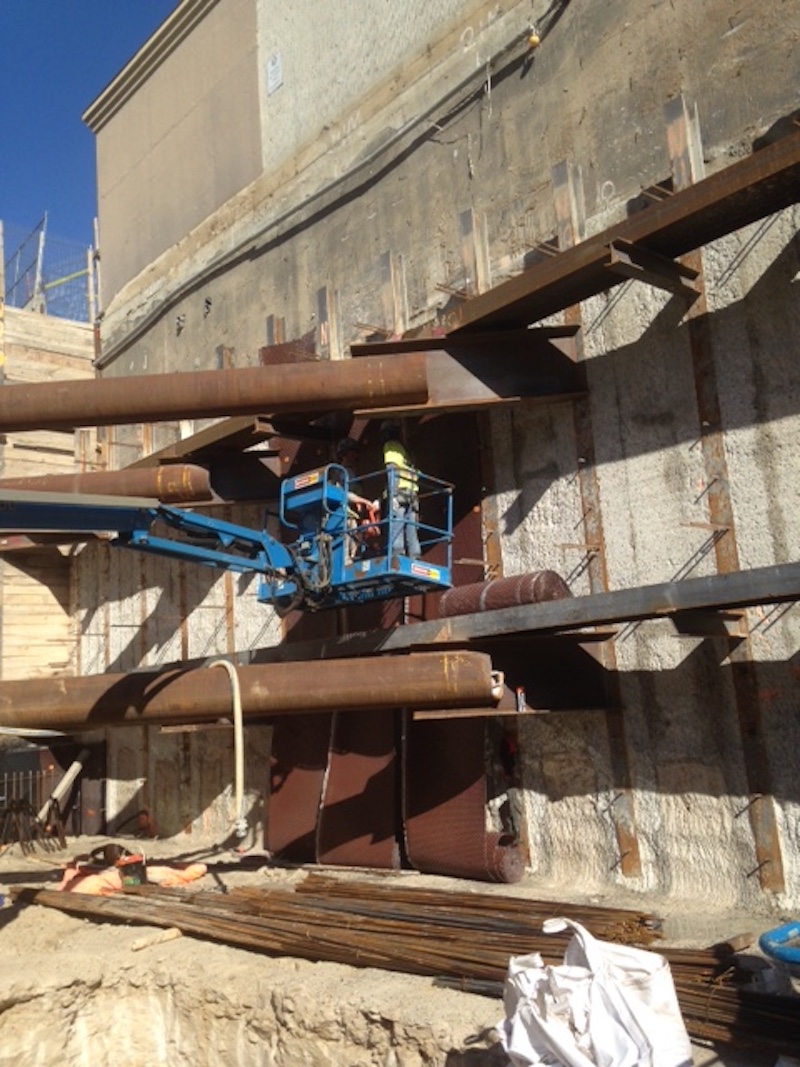Zero-lot-line (ZLL) below-grade construction is often necessary in urban settings where buildings are constructed up to or very close to the neighboring property line. There is often very little to no space between the buildings. This kind of construction frequently requires the application of blindside waterproofing – where the waterproofing system is applied before the wall concrete is poured - to various types of shoring conditions. Due to these conditions, some waterproofing consultants and professionals feel that redundant waterproofing is most effective.
WHY DOES ZLL PRESENT CHALLENGES TO WATERPROOFING?
During ZLL construction there are three main components, the shoring system, the waterproofing membrane, and the concrete wall. Since foundations are going deeper and are being built in areas where there are existing structures, different shoring methodologies might be used along with different internal bracing techniques. Conforming and installing a waterproofing system becomes increasing complex and requires more coordination with a ZLL foundation.
After application of the waterproofing membrane is completed, reinforcement steel is placed, and the structural wall is put in place using cast-in-place concrete or shotcrete.

CAST-IN-PLACE VS. SHOTCRETE WALLS
Cast-in-place concrete is generally more expensive, but can be applied in a more uniform manner that creates better contact between the waterproofing system and the structural wall. In turn, this creates less stress on the waterproofing system during application.
Shotcrete foundation walls continue to become more prevalent and are chosen over cast-in-place concrete as it can expedite the construction process and provide significant savings to the building owner. While shotcrete provides advantages to the construction team, it can adversely impact the previously installed waterproofing system due to its irregular application which create actual voids in the structural wall. Creating proper consolidation of the concrete is critical to help prevent damage to the waterproofing system and its associated water stops and penetrations.
REDUNDANT WATERPROOFING SYSTEMS FOR ZLL WALLS
With more complex foundations and building owners’ desire to use shotcrete, many waterproofing consultants believe that creating redundancy will increase the chances for success. One such system by EPRO, Inc. utilizes a methodology described as redundant field-installed composite design. This means that layers of below-grade protective materials are selected depending on each site’s specific conditions and then applied directly in the field instead of being first fabricated in a factory setting. To best match the unique needs of ZLL construction and other scenarios, EPRO’s systems are categorized according to the level of protection needed: good (E.Proformance), better (E.Protect), and best (E.Protect+).
ZLL sites are usually located in tight conditions with little or no room to provide adequate safety, production performance, and watertight systems. They also are generally located near or in the water table where most of our major cities were built. Here, redundant waterproofing systems can simply be more adaptable to site-specific conditions. Additionally, with budget concerns, these kinds of systems may also allow for cost savings to make room for other scopes of work that interact with the waterproofing system.







